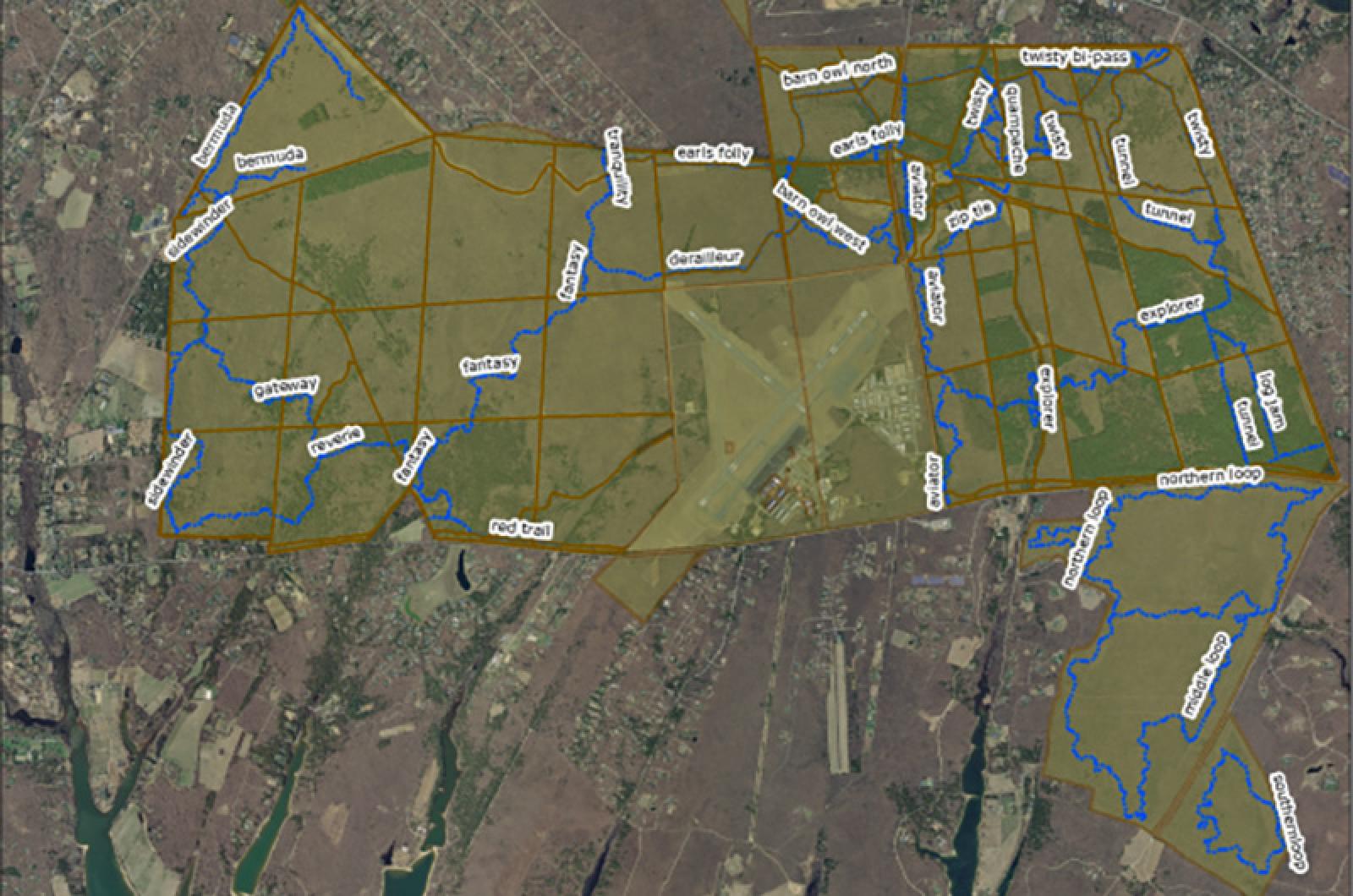Rather than returning the forest trails to an arbitrary point in time based upon a map which may not reflect preexisting trails and directs users to where the majority of endangered species of plants are growing in the fire lanes, let’s work to identify a trail system with attributes outlined in the Department of Conservation and Recreation trail guidelines and best practices manual. A trail system which:
• Protects rare habitats by concentrating use on designated, sustainable pathways.
• Connects people to the natural environment.
• Provides opportunities for multiple-use recreation.
• Connects important trail corridors, destinations and population centers both within and outside of our facilities.
Let’s step back from how the trails came to be, assess how they fit into a framework outlined above and work with the appropriate parties toward permitting them. Closing single-track trails and focusing users on the fire lanes does not accomplish any of the DCR guidelines.
A little online research shows the endangered plant species that grow in the fire lanes in the Manuel F. Correllus State Forest (See www.umass.edu/nebarrensfuels/publications/pdfs/gretel%20final20thesis).
Not one of the trails in the state forest has ever been permitted. This implies the preexisting trails the DCR elected to leave open were grandfathered. This sets the clock back to an arbitrary time rather than evaluating trails by popularity and assessing their actual impact. Why not look at the trails as they exist today, acknowledge there is a difference between user preferences for paved paths, narrow single track and wide sandy sunny roads, and permit the existing trails which best serve the public?
The DCR trail guidelines and best practices manual (available online) states in part: “For the DCR, trails are the intersection of conservation and recreation. They are one of our most used facilities. They deserve a high level of attention.” The manual also says: “The most successful trails are a reflection of the settings and landscapes they traverse. People purposefully choose specific settings for the experience they seek, the trail should reflect those expectations.”
The fire lanes in the state forest simply are far from a rich and enjoyable experience, with deep sand in the middle with tick-infested grass (in a place where tick-borne diseases are a real concern), exposed to intense sun in the summer.
Promoting stewardship is a stated goal of the DCR: “Instilling users and the public with a sense of ownership and responsibility for stewardship of trails is a key element of a sustainable trail system.”
Closing the trail system which many Vineyarders have turned to in a time of social distancing will do little to promote stewardship.
Foisting trail policing duties off on Sheriff’s Meadow after throwing them under the bus will do little to endear islanders to a well-intentioned Island organization which has stepped up to shoulder blame. The majority of new trails were constructed by volunteers who filed DCR paperwork and assisted the forest supervisor. Kudos to Sheriff’s Meadow executive director Adam Moore for pursuing permits, even though he was told by the DCR supervisor not to worry. Adam put an end to Sheriff’s Meadow involvement when he confirmed permits were lacking.
The forest has been chronically under-staffed and lacking in functioning equipment; it needed help. Sheriff’s Meadow even supplied an employee to survey the trails for DCR to determine if any endangered species were affected.
The DCR, on the other hand, has exhibited very little knowledge of what goes on in what they profess to be a vitally important property.
In 2019, the forest supervisor told me a group of DCR managers met and toured the trails with him and praised his efforts. They were reportedly proud of the meandering nature and connectivity of the trails. Unfortunately, those DCR employees have moved on. How convenient the new guys profess no knowledge of who worked on the trails.
The trails in the spotlight did not come to be under the cloak of darkness by stealthy Sheriffs Meadow employees. Before Sheriff’s Meadow was asked to help, in late winter 2018, after studying trail maps from the 1800 and 1900s, the Island forest supervisor worked with volunteers to reclaim and re-route abandoned or overgrown trails. In the winter of 2019, DCR volunteers were told Natural Heritage requested a portion of the Fantasy Trail be rerouted off a fire lane skirt after they identified endangered plants. It is ironic the present plan directs the public back onto the fire lanes.
As for the endangered moths, many of them are not only exclusively found in the state forest. They prefer frost bottoms and pitch pine stands. Portions of the new trails are reroutes of older trails around the sensitive frost bottoms. Ironically, the previous forest superintendent told me he was working to re-route trails out of frost bottoms.
It seems like it would be easy to find a way for moths and people to co exist. They do elsewhere on the Island.
I implore DCR not to base trail closures on generically calculated trail density numbers, and off-the-cuff assessments of redundancy based on perusal of a map. The state forest is a tiny portion of the land managed by the DCR but it is 12 per cent of the Island, where the public can connect to the natural environment. It is a special place, not only for the rare and endangered species, but for residents and visitors of the Island as well.
Carol Berwind, who lives in Edgartown, has volunteered in the state forest. She is married to Michael Berwind.




Comments
Comment policy »